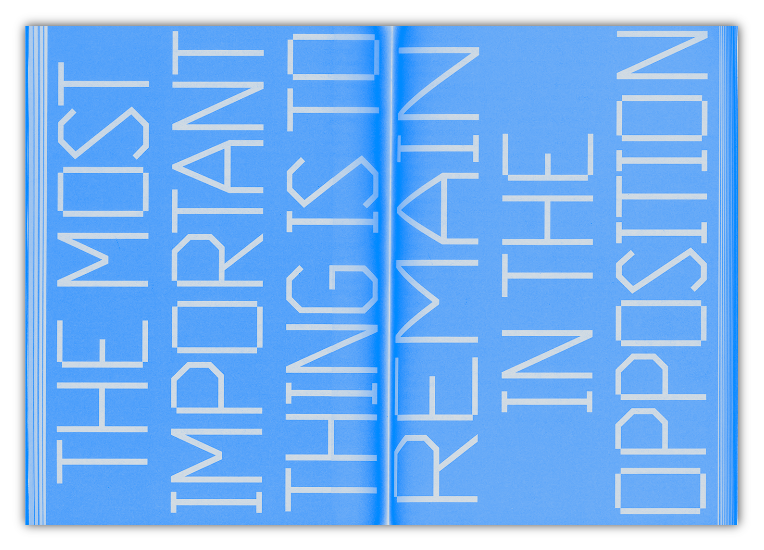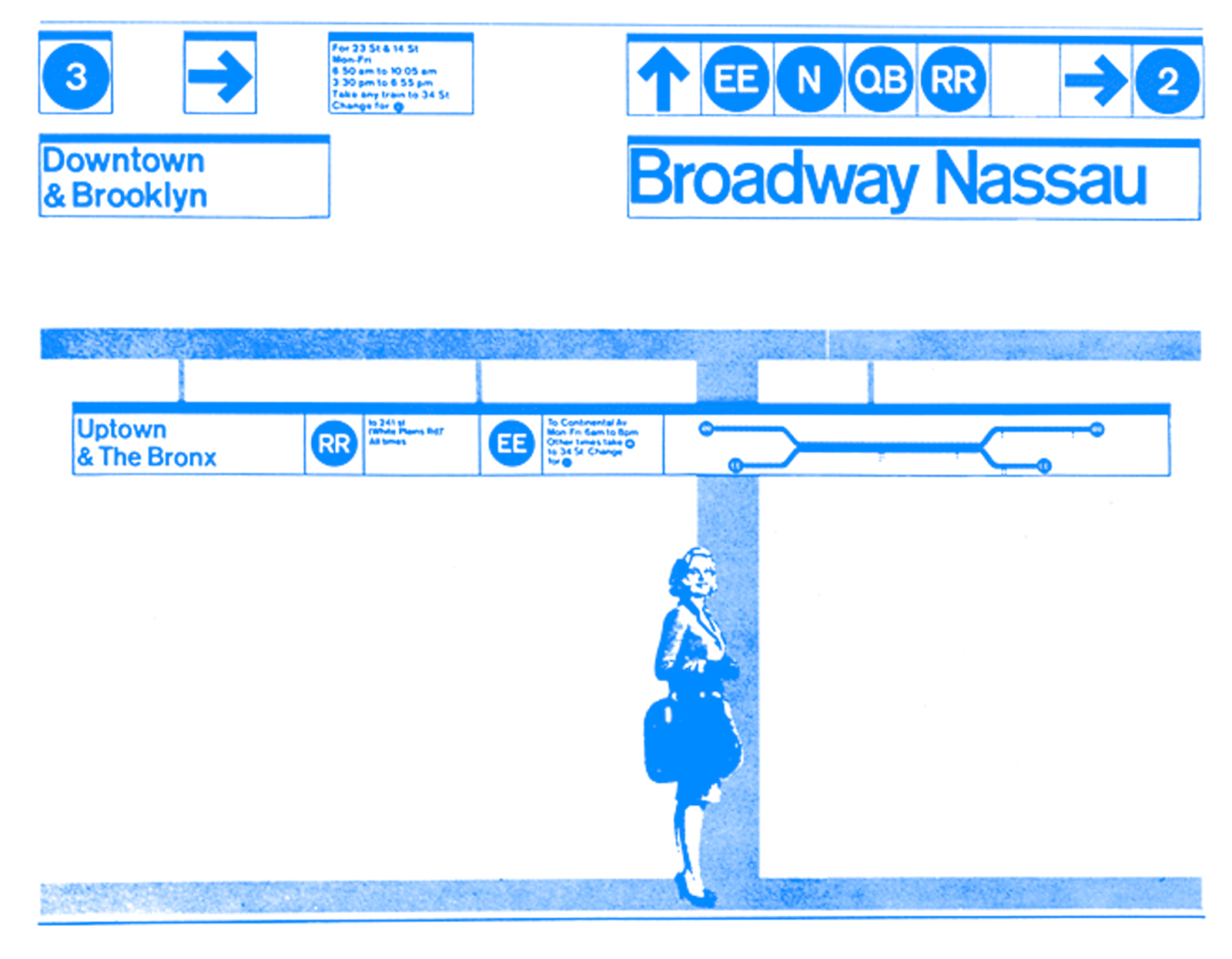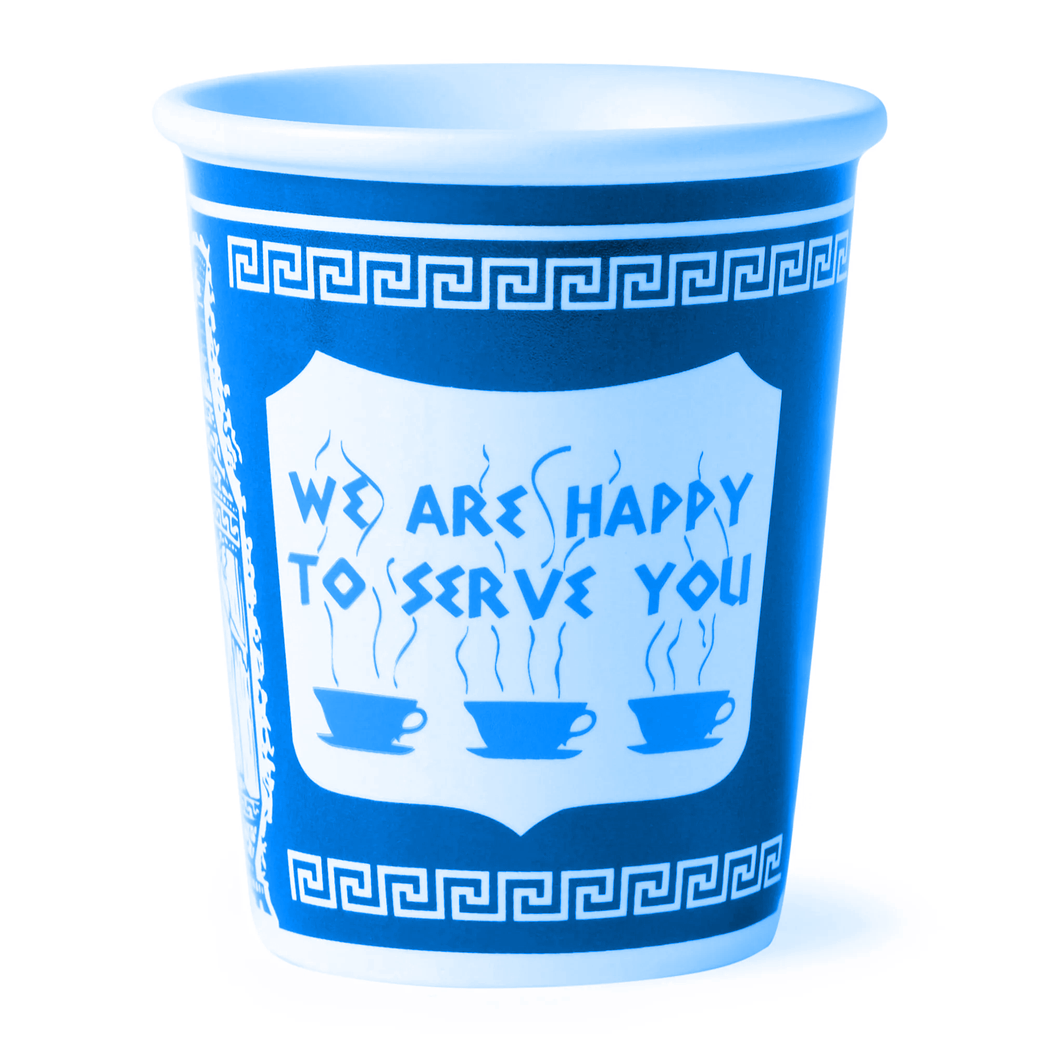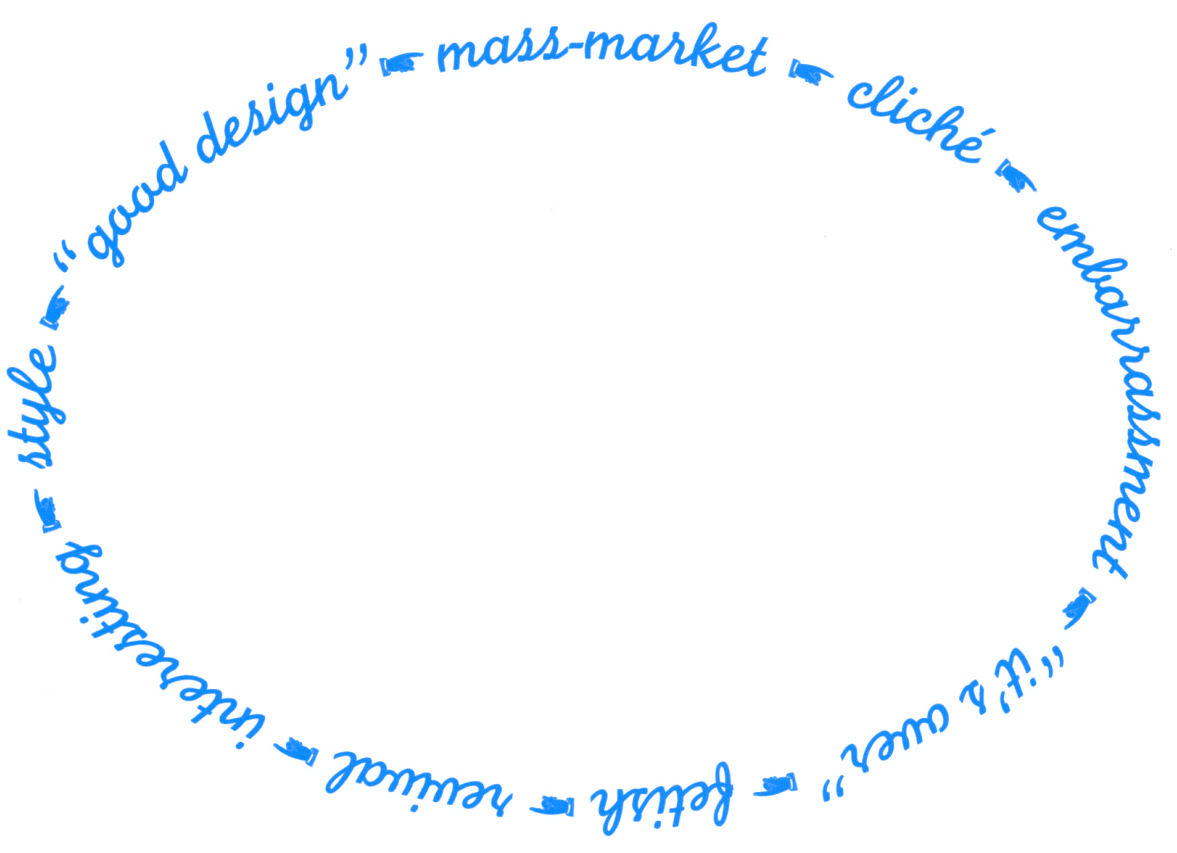Projects

As a designer, you need to have a perspective on the visual culture, your own style, and what kind of problems you want design to address. For this project, I'd like you to first design a typeface using a tool of your choice. Aim towards expression, but allow for legibility. You will then compose a "manifesto" that frames your personal stance relative to design’s current and future impact. Finally, you will typeset your manifesto in your typeface using a provided template.
Design Outcome: Typeface/ Poster/ Manifesto
Project Timeline: August 19th — September 16th

Using what you've written in your manifesto and your typeface, I'd like you to design at 12 page spread (all at a provided size) that takes 5 words or phrases from your writing and uses illustration to editorialize these phrases. One catch: you must use only orange (#ff8200) and white. These spreads will be the basis for a compilation publication for the course.
Design Outcome: 16 Page Zine / Class Publication
Project Timeline: September 16th — October 8th

You will develop an "experimental" way-finding project that directs someone to some place (either literally or abstractly). You will create a Design Tender and make at least one piece of physical way-finding. This object can be a sculptural as you'd like, but the design tender must explain how it could be built. It will be installed with your final projects at the end of semester exhibition.
Design Outcome: Way-Finding Design Tender / Way-Finding Sculpture
Project Timeline: October 8th — November 6th

For this project, you will choose a design subject and then make a collection of animated, printed, and physical graphics which help you understand it. You will then prepare a 9-minute presentation to be delivered over in class collating your design research. This constitutes the documentation of your design research project. It will be recorded!
Design Outcome: Presentation of Design Research
Project Timeline: November 11th — December 9th (Final Meeting)
